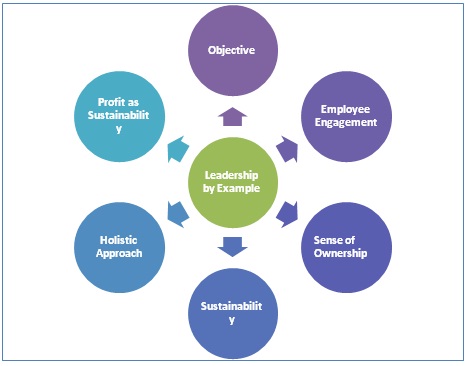- Articles ›
- Human Resources ›
- The Balloon Model Of Organization Framework Articles
The Balloon Model Of Organization Framework
Southwest airlines, General Electric, Mitsubishi, and Toyota are some of the successful organizations which we look to emulate. An organization success is dependent on the robustness of its organizational framework. We take a look at the vital parameters of organizational framework that we have derived from these successful organizations, and form the balloon framework of organization model. Each component of the framework resembles a balloon, where the success of development of next balloon is dependent on the consistency and sustenance of the previous balloon.

Leadership by Example:
From Herb Kelleher helping his staff during serving the customers and unloading luggage; to Lee Iacocca taking the first pay cut during revival of Chrysler, the framework of organization is driven by the action of leaders. Employee motivation, operational efficiencies, financial stability and marketing breakthrough are the derivatives of this magic mantra in corporate world.
Objective:
An objective of an organization underlines its intention. Whether it be achievement of operational efficiency of Indigo or being the most successful and respected car company in America (Toyota), a crisp and simple objective statement not only helps employers but also the employees to be particular about the approach of organization..

The balloon framework of organization model
Clarity of objective within employees leads to productive conflicts, co-ordination, transparent evaluation and proper mentoring.
Employee Engagement:
Employee engagement not only refers to engaging employees through professional activities, but also making sure that their personal aspirations are catered to. For example Google allows people to take risks and fail in their pursuit for technological excellence, while American Express offers an employee assistance program addressing personal, emotional, health and well-being issues.
Sense of ownership:
We see confidence in those who take pride in stating “we” instead of “the company”. This is where sense of ownership comes into play. For an organization to succeed, it is vital today that the employee have a sense of ownership towards the organization. Makemytrip for instance issues ESOPs to its employees. Sense of ownership also ensures that any decision/activities performed by the employees results in the well being of the organization.
Sustainability:
The crème de la crème of organizational behavior is sustainability. From Danone-Grameen bank partnership to HUL-SBI tie up, organizations today work not only on providing better products/services but also leveraging sustainability while developing products or catering services. For example, Mitsubishi not only achieved operational efficiency by using ‘li-ion’ batteries, but also was able to reduce CO2 emissions.
Holistic Approach:
The penultimate ingredient to the delicious dish of organizational framework is holistic approach. ‘Stakeholders’, not ‘shareholders’, should be the primary goal of organizations. The stakeholders include board of members, employees, government, society and shareholders. Sustainability, long term vision, diverse approach (giving every entity an equal importance) are the advantages of using this approach. Having so many entities would help organization receive reviews from each of these sections and thus work towards improving its delivery in all fonts or organizational aspects.
Profit as means of sustainability:
Many organizations dwindle in pursuit to satisfy shareholders. Although it is true that profit is an indicator of organization’s well being, but the statement cannot be completely relied upon. For example Southwest airlines continued believing its principles of customer satisfactions even after lowering the dividends paid out. It is vital for organizations to realize the fact that profit is a means of sustainability and is a derivative of customer satisfaction. As the balance scorecard rightly points out, employee motivation leads to operational efficiency, which in turn results in customer satisfaction finally leading to profits.
This article has been authored by Sidharth Panigrahi from TAPMI.
Views expressed in the article are personal. The articles are for educational & academic purpose only, and have been uploaded by the MBA Skool Team.
If you are interested in writing articles for us, Submit Here
Share this Page on:
What is MBA Skool?About Us
MBA Skool is a Knowledge Resource for Management Students, Aspirants & Professionals.
Business Courses
Quizzes & Skills
Quizzes test your expertise in business and Skill tests evaluate your management traits
All Business Sections
Write for Us